#early 20th century contemporary art
Text
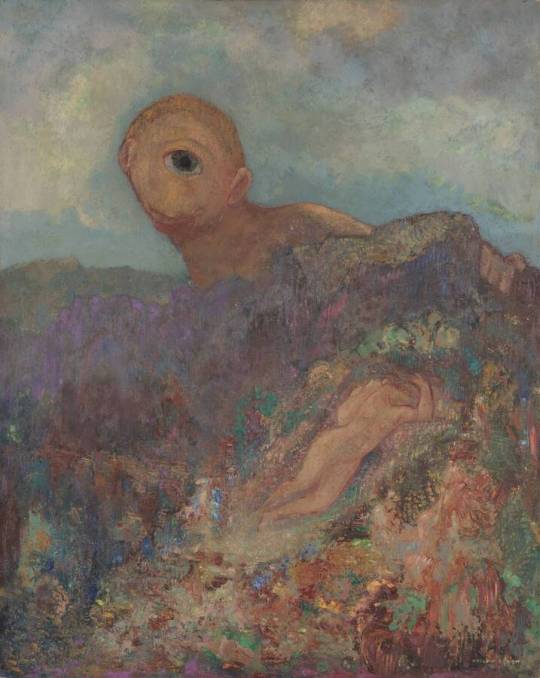
Odilon Redon (French 1840-1916), Le cyclope (The Cyclops), 1914. Oil on cardboard mounted on panel, 65,8 × 52,7 cm. (Source: Kröller-Müller Museum, Otterlo, The Netherlands)
#art#artwork#modern art#contemporary art#modern artwork#contemporary artwork#early 20th century contemporary art#early 20th century modern art#French art#modern French art#contemporary French art#French artist#French painter#symbolism#dream world#fairies#monsters#spirits#fantasy figures#The Cyclops#Kröller-Müller Museum#Odilon Redon
5 notes
·
View notes
Photo

#picasso#cubism#modern art#contemporary art#spanish art#art history#history#modernism#early modern#19th century#20th century#marie therese#Pablo picasso#mondrian#rothko#two dimensional#futurism
54 notes
·
View notes
Text

Alberto Morrocco (British 1917-1998) • Still Life with Melon • c. 1968 • Wood relief and gesso paint on board
#art#still life#mixed media artwork#british artist#alberto morrocco#modernism#british modernism#20th century british art#early contemporary art#art of the still life blog#art blogs on tumblr#art lovers on tumblr#still life fruit#artist#art blog#art history#fine art
8 notes
·
View notes
Text
Every time I find that a semi-obscure local magazine got discontinued I feel like this
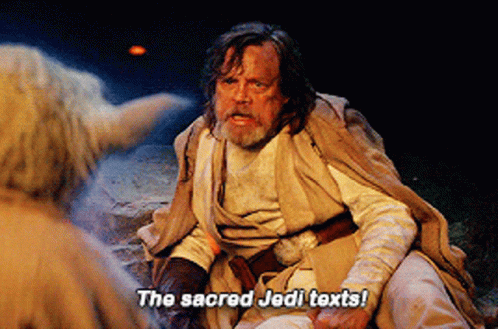
[Image Description: A gif of Mark Hamill playing Luke Skywalker in Star Wars: The Last Jedi. He is looking between Yoda's force ghost and something burning off-screen, pointing angrily as he says: "The sacred Jedi texts!" /End Description.]
#the archival state of contemporary works is abhorrent and if i hear anyone bringing into question the worth of entertainment-oriented media#i'll start frothing at the mouth#yes it has no academic value but it has historical importance you dense fuck! all art is auto-biographical or the very least a monograph of#the day and age it was made in!#all art is inherently valuable and that's the hilld i'll die on. even marvel's stupid copaganda movies because it is an effective monograph#of early 20th century united states of america#actually you know what? this goes on main. i don't care
2 notes
·
View notes
Text
Cross-posting an essay I wrote for my Patreon since the post is free and open to the public.

Hello everyone! I hope you're relaxing as best you can this holiday season. I recently went to see Miyazaki's latest Ghibli movie, The Boy and the Heron, and I had some thoughts about it. If you're into art historical allusions and gently cranky opinions, please enjoy. I've attached a downloadable PDF in the Patreon post if you'd prefer to read it that way. Apologies for the formatting of the endnotes! Patreon's text posting does not allow for superscripts, which means all my notations are in awkward parentheses. Please note that this writing contains some mild spoilers for The Boy and the Heron.

Hayao Miyazaki’s 2023 feature animated film The Boy and the Heron reads as an extended meditation on grief and legacy. The Master of a grand tower seeks a descendant to carry on his maddening duty, balancing toy blocks of magical stone upon which the entire fabric of his little pocket of reality rests. The world’s foundations are frail and fleeting, and can pass away into the cold void of space should he neglect to maintain this task. The Master’s desire to pass the torch undergirds much of the film’s narrative.

(Isle of the Dead. Arnold Böcklin. 1880. Oil on Canvas. Kunstmuseum. Basel, Switzerland.)
Arnold Böcklin, a Swiss Symbolist(1) painter, was born on October 16 in 1827, the same year the Swiss Evangelical Reformed Church bought a plot of land in Florence from the Grand Duke of Tuscany, Leopold II, that had long been used for the burials of Protestants around Florence. It is colloquially known as The English Cemetery, so called because it was the resting place of many Anglophones and Protestants around Tuscany, and Böcklin frequented this cemetery—his workshop was adjacent and his infant daughter Maria was buried there. In 1880, he drew inspiration from the cemetery, a lone plot of Protestant land among a sea of Catholic graveyards, and began to paint what would be the first of six images entitled Isle of the Dead. An oil on canvas piece, it depicts a moody little island mausoleum crowned with a gently swaying grove of cypresses, a type of tree common in European cemeteries and some of which are referred to as arborvitae. A figure on a boat, presumably Charon, ferries a soul toward the island and away from the viewer.
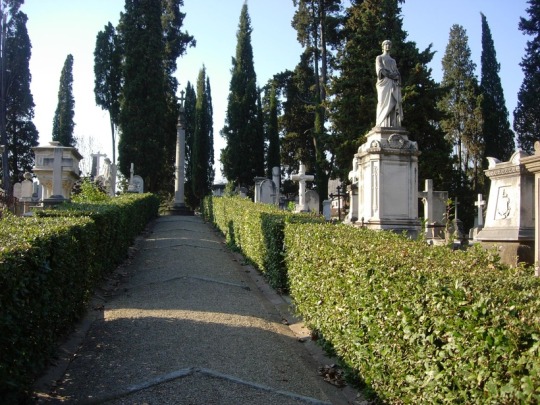
(Photo of The English Cemetery in Florence. Samuli Lintula. 2006.)
The Isle of the Dead paintings varied slightly from version to version, with figures and names added and removed to suit the needs of the time or the commissioner. The painting was glowingly referenced and remained fairly popular throughout the late 19th and early 20th centuries. The painting used to be inescapable in much of European popular culture. Professor Okulicz-Kozaryn, a philologist (someone with a deep interest in the ways language and cultural canons evolve)(2) observed that the painting, like many other works in its time, was itself iterative and became widely reiterated and referenced among its contemporaries. It became something like Romantic kitsch in the eyes of modern art critics, overwrought and excessively Byronic. I imagine Miyazaki might also resent a work of that level of manufactured ubiquity, as Miyazaki famously held Disney animated films in contempt (3). Miyazaki’s films are popularly aspirational to young animators and cartoonists, but gestures at imitation typically fall well short, often reducing Miyazaki’s weighty films to kitschy images of saccharine vibes and a lazy indulgence in a sort of empty magical domestic coziness. Being trapped in a realm of rote sentiment by an uncritical, unthoughtful viewership is its own Isle of Death.

(Still from The Boy and the Heron, 2023. Studio Ghibli.)
The Boy and the Heron follows a familiar narrative arc to many of Miyazaki’s other films: a child must journey through a magical and quietly menacing world in order to rescue their loved ones. This arc is an echo of Satsuki’s journey to find Mei in My Neighbor Totoro (1988) and Chihiro’s journey to rescue her parents Spirited Away (2001). To better understand Miyazaki’s fixation with this particular character journey, it can be instructive to watch Lev Atamanov’s 1957 animated film, The Snow Queen (4)(5), a beautifully realized take on Hans Christian Andersen’s 1844 children’s story (6)(7). Mahito’s journey continues in this tradition, as the boy travels into a painted world to rescue his new stepmother from a mysterious tower.
Throughout the film, Miyazaki visually references Isle of the Dead. Transported to a surreal world, Mahito initially awakens on a little green island with a gated mausoleum crowned with cypress trees. He is accosted by hungry pelicans before being rescued by a fisherwoman named Kiriko. After a day of catching and gutting fish, Mahito wakes up under the fisherwoman’s dining table, surrounded by kokeshi—little wooden dolls—in the shapes of the old women who run Mahito’s family’s rural household. Mahito is told they must not be touched, as the kokeshi are wards set up for his protection. There is a popular urban legend associated with the kokeshi wherein they act as stand-ins for victims of infanticide, though there seems to be very little available writing to support this legend. Still, it’s a neat little trick that Miyazaki pulls, placing a stray reference to a local legend of unverifiable provenance that persists in the popular imagination, like the effect of fairy stories passed on through oral retellings, continually remolded each new iteration.
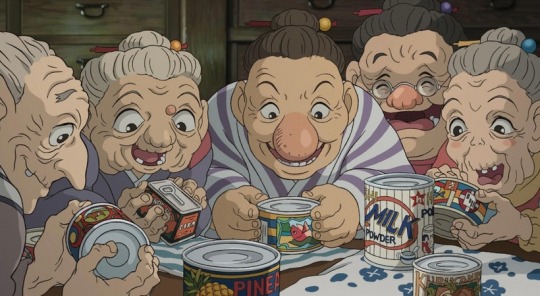
(Still from The Boy and the Heron, 2023. Studio Ghibli.)
Kiriko’s job in this strange landscape is to catch fish to nourish unborn spirits, the adorable floating warawara, before they can attempt to ascend on a journey into the world of the living. Their journey is thwarted by flocks of supernatural pelicans, who swarm the warawara and devour them. This seems to nod to the association of pelicans with death in mythologies around the world, especially in relationship to children (8). Miyazaki’s pelicans contemplate the passing of their generations as each successive generation seems to regress, their capacity to fulfill their roles steadily diminishing.
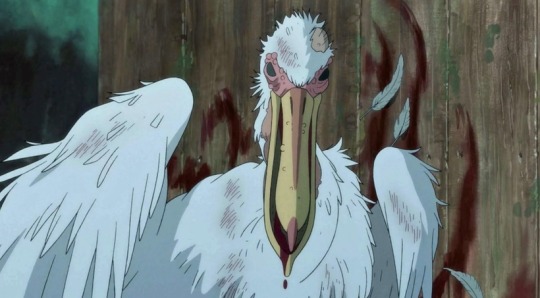
(Still from The Boy and the Heron, 2023. Studio Ghibli.)
As Mahito’s adventure continues, we find the landscapes changing away from Böcklin’s Isle of the Dead into more familiar Ghibli territories as we start to see spaces inspired by one of Studio Ghibli’s aesthetic mainstays, Naohisa Inoue and his explorations of the fantasy realms of Iblard. He might be most familiar to Ghibli enthusiasts as the background artists for the more fantastical elements of Whisper of the Heart (1995).

(Naohisa Inoue, for Iblard Jikan, 2007. Studio Ghibli.)
By the time we arrive at the climax of The Boy and the Heron, the fantasy island environment starts to resemble English takes on Italian gardens, the likes of which captivated illustrators and commercial artists of the early 20th century such as Maxfield Parrish. This appears to be a return to one of Böcklin’s later paintings, The Island of Life (1888), a somewhat tongue-in-cheek reaction to the overwhelming presence of Isle of the Dead in his life and career. The Island of Life depicts a little spot of land amid an ocean very like the one on which Isle of the Dead’s somber mausoleum is depicted, except this time the figures are lively and engaged with each other, the vegetation lush and colorful, replete with pink flowers and palm fronds.

(Island of Life. Arnold Böcklin. Oil on canvas. 1888. Kunstmuseum. Basel, Switzerland.)
In 2022, Russia’s State Hermitage Museum in Saint Petersburg acquired the sixth and final Isle of the Dead painting. In the last year of his life, Arnold Böcklin would paint this image in collaboration with his son Carlo Böcklin, himself an artist and an architect. Arnold Böcklin spent three years painting the same image three times over at the site of his infant daughter’s grave, trapped on the Isle of the Dead. By the time of his death in 1901 at age 74, Böcklin would be survived by only five of his fourteen children. That the final Isle of the Dead painting would be a collaboration between father and son seemed a little ironic considering Hayao Miyazaki’s reticence in passing on his own legacy. Like the old Master in The Boy and the Heron, Miyazaki finds himself with no true successors.
The Master of the Tower's beautiful islands of painted glass fade into nothing as Mahito, his only worthy descendant, departs to live his own life, fulfilling the thesis of Genzaburo Yoshino’s 1937 book How Do You Live?, published three years after Carlo Böcklin’s death. In evoking Yoshino and Böcklin’s works, Hayao Miyazaki’s The Boy and the Heron suggests that, like his character the Master, Miyazaki himself must make peace with the notion that he has no heirs to his legacy, and that those whom he wished to follow in his footsteps might be best served by finding their own paths.
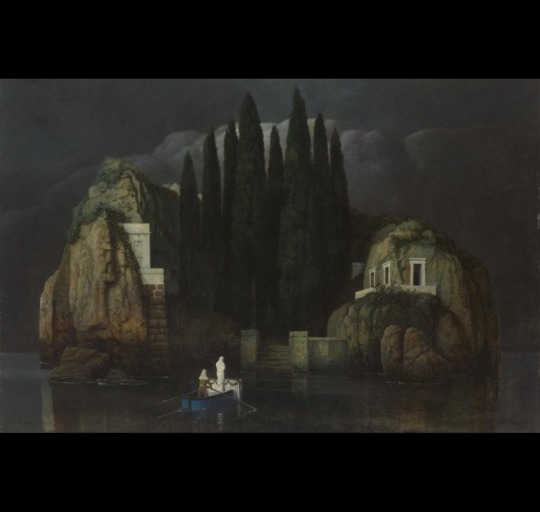
(Isle of the Dead. Arnold and Carlo Böcklin. Oil on canvas. 1901. The State Hermitage Museum. Saint Petersburg, Russia.)
INFORMAL ENDNOTES
1 - Symbolists are sort of tough to nail down. They were started as a literary movement to 1 distinguish themselves from the Decadents, but their manifesto was so vague that critics and academics fight about it to this day. The long and the short of it is that the Symbolists made generous use of a lot of metaphorical imagery in their work. They borrow a lot of icons from antiquity, echo the moody aesthetics from the Romantics, maintained an emphasis on figurative imagery more so than the Surrealists, and were only slightly more technically married to the trappings of traditionalist academic painters than Modernists and Impressionists. They're extremely vibes-forward.
2 - Okulicz-Kozaryn, Radosław. Predilection of Modernism for Variations. Ciulionis' Serenity among Different Developments of the Theme of Toteninsel. ACTA Academiae Artium Vilnensis 59. 2010. The article is incredibly cranky and very funny to read in parts. Contains a lot of observations I found to be helpful in placing Isle of the Dead within its context.
3 - "From my perspective, even if they are lightweight in nature, the more popular and common films still must be filled with a purity of emotion. There are few barriers to entry into these films-they will invite anyone in but the barriers to exit must be high and purifying. Films must also not be produced out of idle nervousness or boredom, or be used to recognise, emphasise, or amplify vulgarity. And in that context, I must say that I hate Disney's works. The barrier to both the entry and exit of Disney films is too low and too wide. To me, they show nothing but contempt for the audience." from Miyazaki's own writing in his collection of essays, Starting Point, published in 2014 from VIZ Media.
4 - You can watch the movie here in its original Russian with English closed captions here.
5 If you want to learn more about the making of Atamanoy's The Snow Queen, Animation Obsessive wrote a neat little article about it. It's a good overview, though I have to gently disagree with some of its conclusions about the irony of Miyazaki hating Disney and loving Snow Queen, which draws inspiration from Bambi. Feature film animation as we know it hadonly been around a few decades by 1957, and I find it specious, particularly as a comic artistand author, to see someone conflating an entire form with the character of its content, especially in the relative infancy of the form. But that's just one hot take. The rest of the essay is lovely.
6 - Miyazaki loves this movie. He blurbed it in a Japanese re-release of it in 2007.
7 - Julia Alekseyeva interprets Princess Mononoke as an iteration of Atamanov's The Snow Queen, arguing that San, the wolf princess, is Miyazaki's homage to Atamanoy's little robber girl character.
8 - Hart, George. The Routledge Dictionary of Egyptian Gods And Goddesses. Routledge Dictionaries. Abingdon, United Kingdom: Routledge. 2005.
#hayao miyazaki#the boy and the heron#how do you live#arnold böcklin#carlo böcklin#symbolists#symbolism#animation#the snow queen#lev atamanov#naohisa inoue#the endnotes are very very informal aksjlsksakjd#sorry to actual essayists
512 notes
·
View notes
Note
Hi,
I am very much not american so I must admit that my first impulse when seeing all the rap/racism discourse was something like "do I really need to consume more american culture, it's fucking everywhere already". Idk but to me it feels like american/english-speaking culture absolutely dominates a lot of the world, sometimes at the cost of out own cultures and languages, if something is in English it is "good", if it is in own own languages it is "bad". Musicians often start singing in English and more american-like after a while to get bigger. We value American culture and music, they mock our accents (and languages sometimes) and best case scenario see us as funny and silly.
Then I started thinking. Do you think that americans kind of see rap kind of like foreign music still? Like low-brow unexotic foreign music.
I don't know this is a really fresh thought and I'm not sure if I am explaining it very well.
hey first off I just want to say -
you are entirely correct in your reaction that people outside of America/the English-speaking world do not need more American culture thrust upon them! this discussion is extremely centered on Americans, the reception and reaction to rap within America, and excuses that white American use to avoid interacting meaningfully with Black culture, art, and ideas. while anti-Blackness as an issue obviously extends far outside of America, this particular conversation is deeply tied to American culture. I appreciate you pointing that out!
I also think you're point about rap, and by extension other Black artforms, being Othered in American pop culture. certainly in terms of language, African American Vernacular English (AAVE), which is utilized by many rappers, is still heavily disputed in its validity as a "real" language, with many dismissing it as a bastardized version of "proper" English and associating it heavily with those who are lower-class and uneducated. in a similar way to many international artists having to work in English to gain wider recognition and validation, many Black Americans are proficient in "code switching," the practice of switching between AAVE that they likely grew up speaking and an English dialect that is considered more "professional."
similarly, I think your use of the term "low-brow" is very apt. Black music has always been met with distrust and disdain by white audiences. there's a reason that so many people feel the need to bring up sex, drugs, and violence when they talk about rap; to many white cultural gatekeepers that was all rap was. (and, like, we should very much talk about why that is in and of itself a bad thing, when white crime is so often glorified in pop culture. why is the Godfather a classic masterpiece but Black men making art about their own experiences with racism, violence, poverty, and survival don't deserve serious consideration?) and that didn't start with rap! in the early 20th century jazz, also a Black creation, was seen as dangerous for promoting promiscuity among nice white teens. no matter what Black people make, white cultural gatekeepers will find a way to start a moral panic about it.
the reverse also happens as well, with Black people being treated as foreigners even in music genres that they helped pioneer. Black Americans were hugely formative in the early days of country, but are met with hostility in the contemporary country scene. Lil Nas X's Old Town Road was one of the biggest songs of the year it was released and undeniably country but was largely snubbed by country music community, and Beyoncé's new country album, Cowboy Carter, is a direct response to her hostile reception at the Country Music Awards in 2016.
the point being, yes, I don't think it's off-base to say that, to many Americans, rap and Black music and art generally are like... very optional and avoidable parts of pop culture in the way that more white-dominated genres are not, similarly to a lot of international and especially non-English art.
194 notes
·
View notes
Note
hi! loving your art. I was watching your awesome stories/gifs and I was wondering: how did Chang develop his feelings for Tintin? Did he discover them before or after him? How did he react and why? (English is not my first language so if you see a grammatical mistake, I'm sorry. Also, sorry if so many questions made you feel like you were in a philosophy exam)
Thank you so much! As a contrast to the rest of the Marlinspike team I'm writing Chang as someone who makes friends and develops crushes pretty easily!
I imagine he's had a crush on Tintin for some time, possibly from when they first met. He's been at the mercy of his circumstances for most of his life until that point - Tintin basically makes him feel capable of doing stuff.
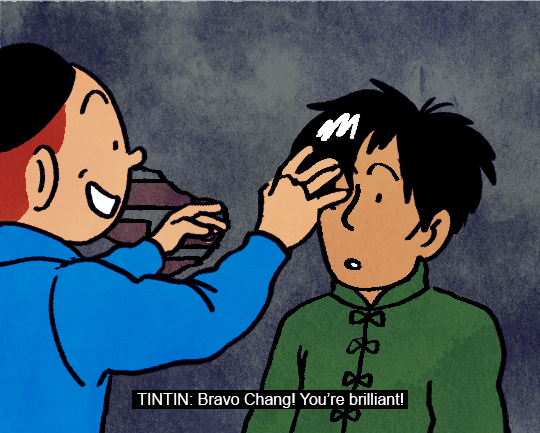

He's pretty heartbroken after the Blue Lotus. Tintin doesn't contact him for years. Chang is struggling to adjust to his new family and is failing at school, having missed out on a good education for a few years prior. Until Tibet he feels pretty hopeless, he will never live up to the time when he took down a drug ring.
His near death experience in Tibet shakes him out of this rut. He starts to travel and take up hobbies like dance and photography. Didi trains him in some basic martial arts. Tintin makes an effort to actually stay in touch this time. Chang has some abandonment issues as he's frequently lost people throughout his life, so he's someone who's willing to give people second chances, even if they've hurt him badly. Chang thinks he's well over his crush on Tintin when he comes around to Belgium for his studies, but falls for him again very quickly!
Unlike Tintin, Chang is a lot more comfortable with who he is. He's used to being the odd one out and has generally low expectations for himself, so just goes with the flow.

Below I talk a little with how I'm going about writing him and the historical context surrounding this, cw for mentions of racism (sinophobia) and queerphobia:
I'm writing Chang as bi, I thought it would be interesting to explore as Asian men were perceived differently in the 30s compared to today. While Asian men in the West are currently heavily desexualised in the early 20th century they were stereotyped as predatory and deviant. In London a lot of Chinese immigrants were male dockworkers, so when they married white women there was a lot of fearmongering about predatory and disloyal Chinese men.
A lot of depictions of Asian men in Western media reflected these stereotypes (and often used queercoding to push the idea of Asian men being animalistic seducers - General Henry Chang in Shanghai Express (1932) was written to be bisexual while posing as a threat to the white leads). Some examples off the top of my head include Hishuru Tori from The Cheat (1915) and The Mask of Fu Manchu (1932). Novels frequently depicted Chinese drug lords with borderline supernatural powers in manipulation.
On the other hand I've noticed how fans frequently depict Chang as someone who's submissive, demure and soft, which ignores how ridiculously brave and proactive he is in canon (stealing documents from police officers, charging into a man immediately after getting shot at by a machine gun, I could go on!). It's a common example of Fandom Racism (not accusing anyone specifically, it's just a trend I've noticed.)
When writing Chang I'm kinda reckoning with two different eras. From a contemporary angle I'm writing him as a love interest, which as an Asian guy I rarely see in media today. I also gotta consider his own time and context, how he would navigate being a queer Chinese guy, and how that would affect his relationship with others and himself.
#asks#fanart#tintin#adventures of tintin#chang#tinchang#gif#animation#2d animation#comic#racism cw#biphobia cw#i am Absolutely overthinking this whole thing but i will not stop#tldr chang falls in love easily#he has a small crush on tintin from the blue lotus#gets his heart broken#meets tintin again and they rebuild their friendship#and he falls for him again#the blue lotus
775 notes
·
View notes
Text
Irish dress history sources online:
A list of sources for Irish dress history research that free to access on the internet:
Primary and period sources:
Text Sources:
Corpus of Electronic Texts (CELT): a database of historical texts from or about Ireland. Most have both their original text and, where applicable, an English translation. Authors include: Francisco de Cuellar, Luke Gernon, John Dymmok, Thomas Gainsford, Fynes Moryson, Edmund Spenser, Laurent Vital, Tadhg Dall Ó hUiginn
Images:
The Edwin Rae Collection: A collection of photographs of Irish carvings dating 1300-1600 taken by art historian Edwin Rae in the mid-20th c. Includes tomb effigies and other figural art.
National Library of Ireland: Has a nice collection of 18th-20th c. Irish art and photographs. Search their catalog or browse their flickr.
Irish Script on Screen: A collection of scans of medieval Irish manuscripts, including The Book of Ballymote.
The Book of Kells: Scans of the whole thing.
The Image of Irelande, with a Discoverie of Woodkarne by John Derricke published 1581. A piece of anti-Irish propaganda that should be used with caution. Illustrations. Complete text.
Secondary sources:
Irish History from Contemporary Sources (1509-1610) by Constantia Maxwell published 1923. Contains a nice collection of primary source quotes, but it sometimes modernizes the 16th c. English in ways that are detrimental to the accuracy, like changing 'cote' to 'coat'. The original text for many of them can be found on CELT, archive.org, or google books.
An Historical Essay on the Dress of the Ancient and Modern Irish By Joseph Cooper Walker published 1788. Makes admirable use of primary sources, but because of Walker's assumption that Irish dress didn't change for the entirety of the Middle Ages, it is significantly flawed in a lot of its conclusions. Mostly only useful now for historiography. I discussed the images in this book here.
Chapter 18: Dress and Personal Adornment from A Smaller Social History of Ancient Ireland by P. W. Joyce published 1906. Suffers from similar problems to An Historical Essay on the Dress of the Ancient and Modern Irish.
Consumption and Material Culture in Sixteenth-Century Ireland Susan Flavin's 2011 doctoral thesis. A valuable source on the kinds of materials that were available in 16th c Ireland.
A Descriptive Catalogue of the Antiquities in the Museum of the Royal Irish Academy Volumes 1 and 2 by William Wilde, published 1863. Obviously outdated, and some of Wilde's conclusions are wrong, because archaeologists didn't know how to date things in the 19th century, but his descriptions of the individual artifacts are worthwhile. Frustratingly, this is still the best catalog available to the public for the National Museum of Ireland Archaeology. Idk why the NMI doesn't have an online catalog, a lot museums do nowadays.
Volume I: Articles of stone, earthen, vegetable and animal materials; and of copper and bronze
Volume 2: A Descriptive Catalogue of the Antiquities of Gold in the Museum of the Royal Irish Academy
A Horsehair Woven Band from County Antrim, Ireland: Clues to the
Past from a Later Bronze Age Masterwork by Elizabeth Wincott Heckett 1998
Jewellery, art and symbolism in Medieval Irish society by Mary Deevy in Art and Symbolism in Medieval Europe- Papers of the 'Medieval Europe Brugge 1997' Conference (page 77 of PDF)
Looking the part: dress and civic status and ethnicity in early-modern Ireland by Brid McGrath 2018
Irish Mantles, English Nationalism: Apparel and National Identity in Early Modern English and Irish Texts by John R Ziegler 2013
Dress and ornament in early medieval Ireland - exploring the evidence by Maureen Doyle 2014
Dress and accessories in the early Irish tale, ‘The Wooing of Becfhola’ by Niamh Whitfield 2006
A tenth century cloth from Bogstown Co. Meath by Elizabeth Wincott Heckett 2004
Tertiary Sources:
Medieval Ireland: An Encyclopedia edited by Sean Duffy published 2005
Re-Examining the Evidence: A Study of Medieval Irish Women's Dress from 750 to 900 CE by Alexandra McConnell
#resources#dress history#irish dress#irish history#early medieval#bronze age#textile history#late medieval#16th century#historical dress
87 notes
·
View notes
Text
[Book Rec + Reaction/Thoughts] The Lantern and the Night Moths 灯与夜蛾 by Yilin Wang
An anthology of translated poems by five modern or contemporary poets and accompanying essays by the translator, @yilinwriter.
You can find the pronunciation guide and list of corrections here!
The cover art, a beautiful expression of the tone of this collection, is by Taiwanese artist Ciaoyin (check out her gorgeous insta!). I'm looking forward to the arrival of the physical book as my tab absolutely does not do it justice xD

Anyway! The official release date is 02 April 2024 though there have been some very thoughtful reviews by early readers already. Here, here, here and here.
(It was an ARC that I received too… though in the time it took to put this together, the ebooks have already gone out to readers >.< typical snail yj!)
Instead, I’ll tell you who I think would be interested in this book or might benefit from reading it, then share things that are cool about it from the perspective of a bilingual hobbyist translator + lover of ancient poetry and lyrics.
Who should read it?
If annotations, translator’s notes and reflections spark joy for you...
If you’ve ever read poetry translations and been intensely curious about what goes on under the hood...
If you’re a translator yourself wanting to hear another voice...
Definitely check this out!
Also if you’re CN+EN bilingual and have ever read something in English that references Chinese terms and concepts etc. except ONLY in English, pinyin or wade-giles and been utterly frustrated by the ensuing guessing game (like me) Fear Not.
That will not be a problem here.
I really appreciate how Chinese words are used naturally where needed for concepts and quotes - they are also translated for those who can't read Chinese so no one is left out. It made this book of and about translation (and more) super comfortable to read! The solution is so simple, so direct, so rarely used that I am amused.
Oh, but do note that the Chinese characters are in simplified though!
The poems are organised by their writers who are listed here by order of birth year, not appearance in the book:
秋瑾 (Qiu Jin, 1875 to 1907)
废名 (Fei Ming. 1901 to 1967)
戴望舒 (Dai Wangshu, 1905 to 1950)
小西 (Xiao Xi, 1974 to _)
张巧慧 (Zhang Qiaohui, 1978 to _)
Altogether, that covers nearly the last 150 years up to now. I’ve never really been into poetry by poets in such relatively recent times, in part because I’d been holding on to this stereotype of them spurning Classical Chinese and ancient poetry in the first half of the 20th century (not entirely true, as I came to realise xD). It made sense and was understandable, but felt sad.
Yet am I the target audience for this book?
Very much so.
In ways I didn’t think I would be too! It was so much fun to experience this both as a reader and a translator that I thought I’d share it here, where we are appreciating Chinese poetry together.
If you didn’t think you’d enjoy modern Chinese poetry, hey, give it a chance!
Oh yeah - on the way home a while back, I was talking to a friend about translation and was surprised to hear that her impression was that it ought to be a straightforward process. Like isn’t it a 1:1 conversion? At some point, ‘what’s the difference between something google translate might return, and how you would say it?’ was asked, and oh that was a delightful question to my ears! I showed her one of my comparison sheets where an original text is laid out alongside multiple translations line-by-line, briefly explaining some common and unique choices and how the people who had translated those probably arrived at the various interpretations. She was pretty amazed to see that the answer to her question was: very different. Hey, it’s a complicated process!
But there’s only so much one can explain in the space of a train ride. That’s why The Lantern and the Night Moths is a book I would also rec to someone like this friend of mine - open minded and curious but never having the chance to think about or encounter the craft of translation.
Like Yilin says, ‘the meaning of a word cannot be fully expressed in one single translation, nor through a series of translation attempts’. She then explains why with great attention to detail and some solid examples from one of the poems with word choices loaded with subtle connotations :D
What's interesting about it?
Okay, for one, Yilin shared a playlist of music that she listened to while working on this book. Here is the link to the spotify one and the one on youtube. Check them out! They sure put me in the mood to read xD (favs: 别知己, 小神仙 & 去有風的地方) Afterwards, this made so much sense like - ah! an audio moodboard.
She's also putting together these adorable mini profiles of each poet along with a cmedia and tea rec to match their vibes. Go see them on her instagram xD
Now to business...
structure
What really helped keep the reader’s focus was the way each section is organized, how the poems and accompanying essay were presented and finally the short bio of each person right at the end.
The poets are first introduced through five or six of their poems, works well suited to this purpose. Their voices, distinct through the vision, ambition and emotion of their words, are brought across by Yilin’s sensitive, thoughtful and poetic translations into English. These translations were also creative and transformative in a way that made so much sense after reading one of her reflections on the process, how she ‘must guide it with gentle hands to ensure its spirit is kept alive and intact during this transformative, and often excruciating process’. A rebirth into another language!
Personally, I’ve come to think of reading translations as looking at a work through another’s eyes. So it’s delightful when the translator’s presence is discernible, and even more so when the reader is given insight into their intention and process via commentary.
Yilin’s essays coupled with the poets’ bios at the end provide a means to go back and appreciate their works in context of their circumstance and inspirations. Similarly, to read the translations with a changed perspective.
I don’t know how much of a thing this is with translated poetry anthologies in English - can count the number I’ve read with both hands lol, and they’re all of the ancient chinese poetry variety - but I really like this design.
drawing on poets who came before them
Remember how we’re always recognizing traces of inspiration from ancient works (to them) in poetry of the various dynasties? 李商隐 Li Shangyin of Tang for example, was influenced by 楚辞 Verses of Chu and folklore and mythology such as that in 山海经 Classic of Mountains and Seas, 李白 Li Bai frequently references poets and history of the 魏晋 Wei-Jin era, and 王维 Wang Wei was clearly familiar with Buddhist scriptures which were translations themselves!
Just like the late Táng poets whom he praised for boldly deviating from the voices before them, Fei Ming used popular references and tropey shorthands ‘in contexts utterly different from the original, reimagining them anew’. Dai Wangshu, too, ‘boldly re-envisioned what modern poetry could look like by revisiting the classics’. In fact, in his very relatable ‘To Answer the Visitor with Classical Imagery’, I see Li Bai’s 春夜宴桃李园序, Qu Yuan’s 离骚 and lots of - as the title says - classical imagery, as if pulling out painting after painting to describe a feeling.
And Dai Wangshu’s faith in the translatability of poetry, that ‘poetry isn’t what is lost in translation, but rather, what survives it’ reminds me of what a friend, @xiakeponz, said that I agree with so much - because readers can ‘experience something in their own individual way through (your) shared humanity rather than language alone’.
poetic tradition and beyond
Between the lines of contemporary poets Zhang Qiaohui and Xiao Xi, I can really see the charm of plain vernacular, how it can be beautiful, incisive and clever in turns. Even as it seems to have moved further than ever from the structure and language of literary Chinese, the themes that inspired common motifs remain a part of life. Mother and divinity, homesickness, finding oneself, tributes to admirable spirits and the issues that trouble society - just in a new form and with different ways of expression.
Qiu Jin
So many FEELINGS about what Qiu Jin was doing - ‘I awaken the spirits of women, hundreds of flowers, abloom’. I would love if she could see the world now. So many things for her to rouse and fight against, but at the same time just as many to be proud of. I am so in awe of her, but now hearing her loneliness and struggle there is a soft spot in my heart for those too.
conclusion
So so so…
Qiu Jin’s admirable fire and lonely resolve. Zhang Qiaohui’s precious ability to express beauty in the mundane and in pain. Fei Ming’s utter delight! He is having so much fun and when* I’m vibing, I feel it too. Xiao Xi’s critical eye and keen observation of the world. Dai Wangshu’s whimsical charm and passion for translation. Finally, Yilin Wang, the connecting thread wound through them all, bringing them together so that we may be acquainted.
*Reading his poetry is like unwrapping a seamless, many layered present. A gift that keeps giving - if only you have a key 😅 Fortunately, Yilin has halved our struggle 🤣
I’ve had such a great time with them all. And if you come, I hope you will too!
#The Lantern and the Night Moths#chinese poetry#Yilin Wang#poetry in translation#灯与夜蛾#Qiu Jin#Zhang Qiaohui#Fei Ming#Xiao Xi#Dai Wangshu#rambly reviews#i read from Fei Ming onwards on my kobo LOL but that one has no colour so...#i might do more of these review-y rambles about poetry things if y'all are interested?#i've been reading LOL#some are chinese some are english#all of them fun and enlightening
36 notes
·
View notes
Text
Rewind the Tape —Episode 4
Art of the episode
Just like we did for the pilot and for episodes two and three, we took note of the art shown and mentioned in the fourth episode while we rewatched it. Did we miss any? Can you help us put a name to the unidentified ones? Do you have any thoughts about how these references could be interpreted?


Bust of a Woman with Her Left Hand on Her Chin
Edgar Degas, 1898 [Identified by @terrifique.]
Degas, whose work already appeared in the second episode, was a French painter of the 19th to early 20th century. His impressionist paintings often depicted ballet dancers, racehorses, and human portraits of isolation.
Krumau on the Molde, Kneeling Girl with Spanish Skirt and Self portrait in a jerkin with right elbow raised
Egon Schiele, 1912, 1911 and 1914
Schiele, whose work we have also been seeing around Rue Royale since the pilot, was an Austrian Expressionist painter, very prolific despite passing before turning 30. His work is recognizable for its transgressive portrayal of the nude body, including his nude self-portraits; but his later oeuvre features many landscapes.

The Kitten's Art Lesson
Henriette Ronner Knip, 1821-1909 [Identified by @terrifique.]
Knip was a Dutch-Belgian romantic style artist best known for paintings of animals, particularly cats and dogs of a playful nature. See more of her work here.

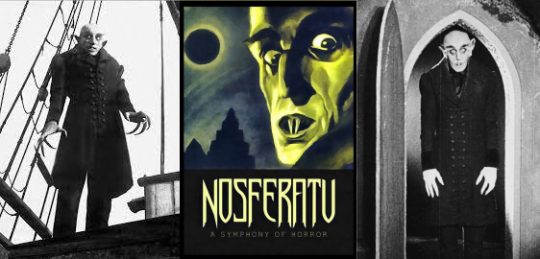
Nosferatu
F.W. Murnau, 1922
Nosferatu is a silent expressionist horror film from the legendary German director F.W. Murnau. It is an unauthorized adaptation of Bram Stoker's Dracula. While not a commercial success upon release in 1922, film historians now consider it an influential and revolutionary film in the horror genre. Since it has been in the public domain since 2019 in the U.S., it is now free to stream on YouTube.
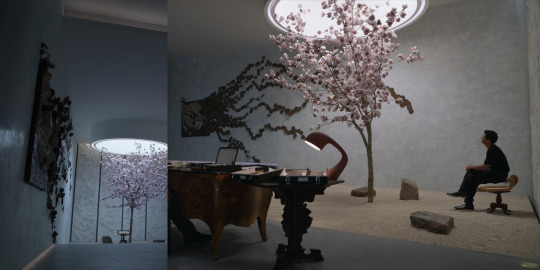
Untitled piece
Sadie Sheldon, undated [Identified by @lanepryce.]

The incredible metalwork piece on the wall of the reading room was made by a New Orleans-based artist, for New Orleans... pizzeria! It was made for Pizza Delicious, using dozens of tin cans. Sheldon describes her work as "site and time-specific projects from found materials (...) related to adaptability, renewal, and appreciating the objects of our everyday life".

New York
George Bellows, 1911 [Identified by @nicodelenfent, here.]
Several of Bellows' pieces have been featured in previous episodes. He was an American realist painter, known for his bold depictions of urban life in NYC. His work "revolutionized the conventions of the traditional American urban vista and surpassed the efforts of other contemporary urban realists" [x].
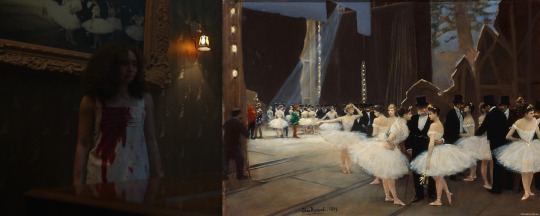
Backstage at the Opera
Jean Beraurd, 1889
Beraurd was a Russian born French painter known for his depictions of Parisian life and society during the Belle Epoque. [Identified by @nicodelenfent.]
Unidentified works
In Claudia's room: above the Knip we can see a painting of what looks like four people, maybe women sitting at a balcony. To the left of the door we can see, on top, a floral bouquet over a dark background, and below that, an illustration or painting of a woman with flowers over a bright pink background.
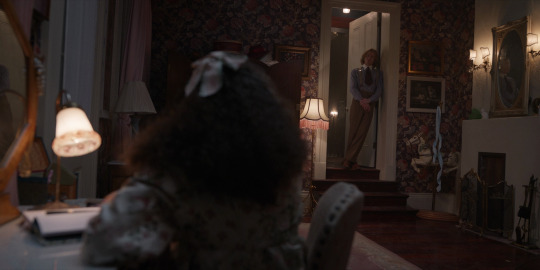
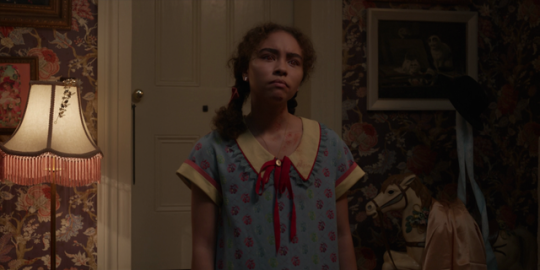
You can see all unidentified works from the first season in this post. If you spot or put a name to any other references, let us know if you'd like us to add them with credit to the post!
Starting tomorrow, we will be rewatching and discussing Episode 5, A Vile Hunger for your Hammering Heart. We can't wait to hear your thoughts!
And, if you're just getting caught up, learn all about our group rewatch here ►
#the vampire claudia#claudia iwtv#louis de pointe du lac#daniel molloy#lestat de lioncourt#vampterview#interview with the vampire#iwtv#amc interview with the vampire#interview with the vampire amc#amc iwtv#iwtv amc#IWTVfanevents#rewind the tape#analysis and meta#art of the episode#the ruthless pursuit of blood with all a child's demanding
31 notes
·
View notes
Text

André Derain (French 1880-1954) Woman in a Chemise, 1906. Painting, oil on canvas, 100 x 81 cm. (Source: SMK, Statens Museum of Kunst, Denmark)
#art#artwork#modern art#contemporary art#modern artwork#contemporary artwork#20th century modern art#20th century contemporary art#early 20th century art#French art#modern French art#contemporary French art#French artist#French painter#fauvist#fauvism#André Derain#human figure#female figure#SMK#Statens Museum of Kunst
37 notes
·
View notes
Text
THIS DAY IN GAY HISTORY
based on: The White Crane Institute's 'Gay Wisdom', Gay Birthdays, Gay For Today, Famous GLBT, glbt-Gay Encylopedia, Today in Gay History, Wikipedia, and more … May 26th
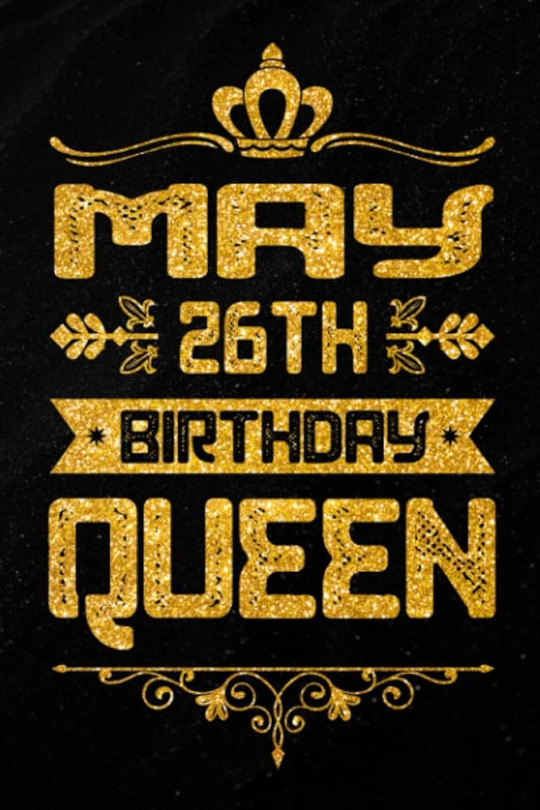

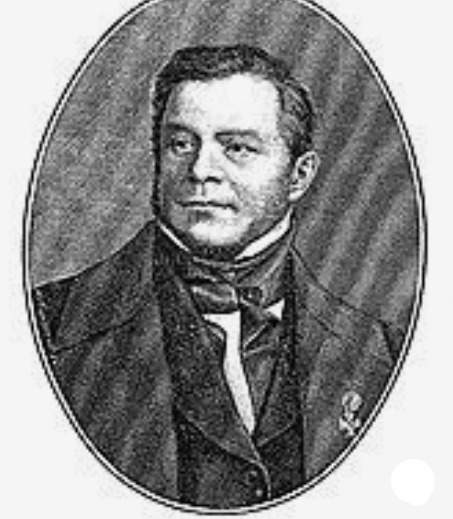
1779 – August Kopisch (d.1853) was a German poet and painter.
Kopisch was born on 26 May 1799 in Breslau, Prussia (now Wrocław, Poland). In 1815 he began studying painting at the Prague academy, but an injury to his hand damaged his prospects of success as an artist, and he turned to literature.
After residences in Dresden and Vienna Kopisch proceeded in 1822 to Italy. At Naples he began a homosexual relationship with the poet August von Platen-Hallermünde; and when out swimming he and the painter Ernst Fries re-discovered the "Blue Grotto" of Capri, which had been associated with male sexuality from the age of Tiberius in Roman times.
In 1828 he settled at Berlin and was granted a pension by Frederick William IV of Prussia, who in 1838 conferred upon him the title of professor. Kopisch produced some original poetry, light in language and in form. He specialised in re-telling legends and popular subjects, and among his Gedichte (Berlin, 1836) are some naïve and humorous little pieces such as Die Historie von Noah, Die Heinzelmännchen, Das grüne Tier and Der Schneiderjunge von Krippstedt, which became popular.
In 1847 he moved to Potsdam and wrote an account of royal residences there and in the neighborhood. He died on 6 February 1853 at Berlin.


1822 – Edmond de Goncourt (d.1896), born Edmond Louis Antoine Huot de Goncourt, was a French writer, literary critic, art critic, book publisher and the founder of the Académie Goncourt.
Writer, art historian of the eighteenth-century art and art critic of contemporary nineteenth-century Paris together with his brother, Jules. Edmond de Goncourt and his brother, Jules, were born into minor aristocracy. Their father and their mother both died when the men were young.
Their inherited wealth enabled the brothers to become artists without concern for their livelihood, relieving Edmond from a treasury clerk position so dismal that he entertained thoughts of suicide. The assembled a collection of eighteenth-century art, largely drawings and pastels, which were not popular at the time.
Though throughout their lives they were self-indulgent pleasure-seekers, the brothers made their initial reputation as journalists. In 1851 the two began publishing a journal chronicling their art scene. The brothers were arrested in 1852 for quoting mildly erotic Renaissance verses in one of their articles.
The brothers wrote about all French artists of the eighteenth century, not just the famous.
They, however, considered themselves novelists and wrote throughout their career. Their Germinie Lacerteux (1864), was based on the life of their servant, Rose, follows her thefts from the brothers to pay for after-hours orgies and trysts. It is considered among the early novels of French Realism devoted to working-class life. In 1867, their novel Manette Salomon appeared. The book, a narrative about the studio practice of contemporary artists, art students and their model, was both original and modern in its treatment of psychology and contemporary life.
The prix Goncourt was conceived by the brothers in the same year (1867) as the Académie Goncourt, a literary society of 10 members. The Goncourt's art criticism focused on the Barbizon school.
Whn Jules died of a syphilis-related heart ailment in 1870, Edmond a homosexual, was devastated.
In 1885, Edmond began his literary salon, known as the genier for the sumptuous attic in which it was held. Edmond's final works were on the Japanese artists Kitagawa Utamaro (1891) and Katsushika Hokusai (1896). He died in 1896.
The Académie Goncourt was established in 1903 through a bequest of Edmond. After Edmond's death, the brothers' importance waned until the second half of the 20th century when they were recognized as the leaders of much of modernism in French art writing and taste.


1907 – Marion Morrison, better known by his stage name John Wayne (d.1979), was an American film actor, director and producer. An Academy Award-winner, Wayne was among the top box office draws for three decades. An enduring American icon, he epitomized rugged masculinity and is famous for his demeanor, including his distinctive calm voice, walk, and height.Wayne was born in Winterset, Iowa, but his family relocated to the greater Los Angeles area when he was nine years old. He found work at local film studios when he lost his football scholarship to USC as a result of a bodysurfing accident. Initially working for the Fox Film Corporation, he mostly appeared in small bit parts. His first leading role came in the widescreen epic The Big Trail (1930), which led to leading roles in numerous films throughout the 1930s, many of them in the western genre. His career rose to further heights in 1939, with John Ford's Stagecoach making him an instant superstar. Wayne would go on to star in 142 pictures.
John Wayne personified for millions the nation's frontier heritage. Eighty-three of his movies were Westerns, and in them he played cowboys, cavalrymen, and unconquerable loners.
Among his better-known later films are The Quiet Man (1952), in which he is an Irish-American in love with a fiery spinster played by Maureen O'Hara; The Searchers (1956), in which he plays a Civil War veteran whose young niece (Natalie Wood) is abducted by a tribe of Comanches in an Indian raid; Rio Bravo (1959), playing a sheriff with Dean Martin; The Man Who Shot Liberty Valance (1962), portraying a troubled rancher competing with Eastern lawyer (James Stewart) for a woman's hand in marriage; True Grit (1969), as a humorous U.S. Marshal who sets out to avenge a man's death in the role that won Wayne his Academy Award; and The Shootist (1976), his final screen performance, in which he plays an aging gunfighter battling cancer.
Wayne was a prominent Republican in Hollywood, supporting anti-communist positions. In June 1999, the American Film Institute named Wayne 13th among the Greatest Male Screen Legends of All Time.
Wayne was married three times and divorced twice, but although he was the epitome of masculinity, stories about another side of him abound.
According to film historian Kevin Brownwing:
During the 1940s the outwardly conservative and heterosexual Wayne would regularly attend screen tests with director John Ford, in order to size up potential conquests. He'd get Ford to order the young hopefuls to take off their shirts and enact scenes which required them to lift heavy objects or bend over a lot.
When he'd picked out his likely targets, Wayne would arrange for Ford to call them back to the studio - usually late at night - for a bogus final screen test.
Instead of the director and a camera crew, the bewildered young actors would find themselves alone in an otherwise deserted studio with an amourous Wayne, who would typically be clad only in a Stetson and a pair of pearl handled Colt .45s holstered on his gunbelt.
This seduction technique proved surprisingly successful for 'The Duke' - his conquests allegedly included Randolph Scott, Joel McCrea and Montgomery Clift, with whom he had a torrid affair during the making of "Red River" in 1948.


1918 – John Dall was an American actor born in New York City (d.1971) He is best remembered today for the part of the cool-minded intellectual killer in Alfred Hitchcock's Rope, but first came to fame as the young prodigy who comes alive under the tutelage of Bette Davis in The Corn is Green, for which he received an Academy Award nomination. He made a number of other films but worked primarily in theatre.
Rope was inspired by the notorious Leopold and Loeb murder case, Dall and co-star Farley Granger - also gay -were cast as two affluent young men who strangle an acquaintance merely as an intellectual challenge to commit the perfect murder.
Although the two men's sexuality is never made explicit in the film, the relationship between Granger's and Dall's characters has a strong homoerotic subtext, skilfully engineered by Hitchcock and his actors through staging, art direction, and nuance. 'It was just a thing assumed,' Granger said many years later of his character's homosexuality. 'Either you got it or you didn't.'
As the film's screenwriter, Arthur Laurents, who was Farley Granger's lover at the time, explained, 'There wasn't a word of dialogue that said [the two men] were lovers or homosexual, but there wasn't a scene between them where it wasn't clearly implied.'
After a long absence from the screen, Dall returned in 1960 to character roles in the costume dramas Spartacus (1960) and Atlantis, the Lost Continent (1961).
John Dall died in Los Angeles from a heart attack in 1971 aged 52.

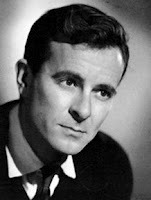
1925 – Alec McCowen is an English actor, best known for classical roles including Shakespeare. He was born in Tunbridge Wells, Kent, and was and a graduate of the Royal Academy of Dramatic Art.
McCowen made his film debut in 1953 in a British film, The Cruel Sea, but achieved his greatest successes on stage. He made his London debut at the Arts Theatre in Ivanov in 1950, and had rising success as Toulouse-Lautrec in Moulin Rouge (1954), Barnaby Tucker in The Matchmaker (1954), and appearances at the Old Vic Theatre in 1959/60 in many Shakespearean plays, notably as Mercutio in Romeo and Juliet. His breakthrough came as Friar William Rolfe in Hadrian the Seventh, for which he won an Evening Standard Award for the London production and a Tony nomination after taking it to Broadway. His next big successes were in Molière's The Misanthrope opposite Diana Rigg (1973) and the role of psychiastrist Martin Dysart in the world premire of Peter Shaffer's Equus (1973), but his greatest achievement was his one-man performance of the complete text of Saint Mark's Gospel (1978), for which he received worldwide acclaim and another Tony nomination.
McCowen has appeared in the films Never Say Never Again (as Q), Cry Freedom, Frenzy , The Age of Innocence, and Travels With My Aunt, for which he received a Golden Globe nomination.
His partner, the actor Geoffrey Burridge died in 1987 from an AIDS-related illness.
In 1989 he was selected to appear on the celebrity surprise show This Is Your Life but was aghast at the programme's complete failure to mention Geoffrey Burridge, who had died less than two years previously and McCowen - bravely for the time - insisted that his late partner be acknowledged.


Don Maclean & Guy Burgess
1951 – Donald Maclean and Guy Burgess, British spies; No ... both spies were not born on the same day. But it is the day that the two British Foreign Office Officials defected to Russia, setting in motion an English witch hunt as vicious as America's contemporary McCarthy investigations. Unfortunately for their gay brothers, and especially for their old Oxford classmates, Maclean and Burgess were homosexuals. Their actions brought new meaning to the dreaded term "security risk" and cost numerous innocent gay men and women their livelihoods and, in some cases, (as in the mathematician Alan Turing) their lives.

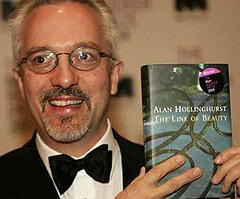
1954 – Alan Hollinghurst, British novelist and poet, born; Winner of the 2004 Booker Prize for The Line of Beauty. His poetry collections include Isherwood is at Santa Monica and Confidential Chats with Boys. He was the was The Times Literary Supplement's deputy editor from 1982 to 1995. In 1989, he won the Somerset Maugham Award for The Swimming Pool Library. In 1994, he won the James Tait Black Memorial Prize for fiction with The Folding Star.
"From the start I've tried to write books which began from a presumption of the gayness of the narrative position," says Hollinghurst. "To write about gay life from a gay perspective unapologetically and as naturally as most novels are written from a heterosexual position. When I started writing, that seemed a rather urgent and interesting thing to do. It hadn't really been done."
Now, he feels, he can move on from that overwhelming decade which "seems to have determined so many things about the way we live now". The Line of Beauty brings to an end this sequence of books in which he has consciously explored gay identity and its fight for recognition. "I do have a sense of having completed a quartet of books which, while not a tetralogy in any narrative sense, do cohere in a way." Unusually, he has no idea for a new novel and may develop some short stories instead. No poems, though.
The context in which he is writing has changed, too. "When I began, there was an urgency about it which isn't there now. Things have changed so much over those 20 years; attitudes towards homosexuality are so different now." Hollinghurst is the beneficiary of that change, but also one of those who helped to achieve it. The gay writers he discussed in his thesis are the last (one hopes, anyway) who will have to suppress their sexuality or encrypt it in their narratives. Hollinghurst went to the same college as Oscar Wilde. But he inhabits another world.


1985 – Dustin "Deuce" Kidby is a Canadian curler from Regina, Saskatchewan. He currently throws lead rocks for Team Matt Dunstone.
Kidby represented Saskatchewan at two Canadian Junior Curling Championships. The first was the 2002 Canadian Juniors, playing lead for Team Kyle George. They finished the event with a 7-5 record. George won the Canadian Juniors in 2005 (without Kidby), but invited him to be the alternate for Team Canada at the 2005 World Junior Curling Championships. The team won the gold medal at the event, and Kidby would play in two matches. Kidby returned to the Canadian Juniors in 2006, playing lead for Team Mitch Heidt. This team also finished with a 7-5 record. In university, Kidby played second for the University of Regina, on a team skipped by Byron Moffatt. The team won the bronze medal at the 2008 CIS/CCA Curling Championships.
Kidby joined the Brad Heidt rink in 2008, playing two season as the team's lead. In their first season, the team played in the 2009 Players' Championship, Kidby's first Grand Slam event, where they won just one game. The next season, Kidby picked up his first World Curling Tour event win as a member of the team, at the Point Optical Curling Classic.
For the 2011-12 curling season, Kidby played lead for the Braeden Moskowy rink, with whom he would win another event, the November 2011 DeKalb Superspiel.
Kidby joined the Josh Heidt team in 2012, playing four seasons as the team's lead. During this period, the team won two events, the 2014 Red Deer Curling Classic and the 2015 Weatherford Curling Classic. Kidby played in the March 2014 National Grand Slam event playing lead for Team Brock Virtue, finishing the event winless.
In 2016, Kidby joined Team Adam Casey for two seasons, again playing lead. The team won the 2017 SaskTel Tankard, the provincial men's championship for Saskatchewan. They would go on to represent Saskatchewan at the 2017 Tim Hortons Brier, where they went 5-6. The next season, the team played in the 2017 Olympic Pre-Tials, going 2-4.
In 2018, Kidby joined the Matt Dunstone rink, playing lead. In this first season, the team won three World Curling Tour events, the Prestige Hotels & Resorts Curling Classic, the DeKalb Superspiel and the Qinghai Curling Elite, as well as the third leg of the 2018-19 Curling World Cup. The team also played in a number of Grand Slam events, making it to the quarterfinals of the 2018 Masters, and qualifying for the 2018 Tour Challenge and the 2019 Canadian Open. They also played in the 2018 Canada Cup, finishing 1-5.
Kidby is openly gay. His brother is D. J. Kidby and he is the cousin of Ben Hebert.

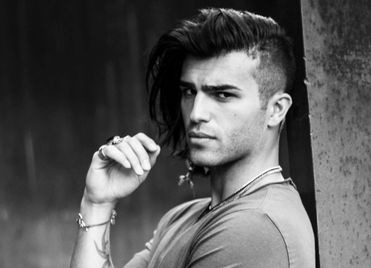
1987 – Touraj Keshtkar, better known under his stage name Tooji, is a Norwegian-Iranian singer, painter, model and television host. Tooji represented Norway in the Eurovision Song Contest 2012 in Baku, Azerbaijan and finished 26th in the final.
Tooji was born in Shiraz, Iran, and moved to Norway when he was one year old. At the age of 16 he started modeling. After the modelling work, he started working on MTV Norway where he presented "Super Saturday" and "Tooji's Top 10". He was also educated as a social worker and has worked in asylum reception centres. Now he works as a child protection consultant in the department of after-care.
Tooji holds a bachelor's degree in child welfare. He has worked in asylum reception centers helping children and teenage refugees and victims of human trafficking. This work motivated him to use his songs and profile to speak out for those who suffer in silence. Tooji is a supporter of LGBT and women's rights, as well as a supporter of Green Wave, Iran's democratic reform movement. Tooji wore a Free Iran green bracelet during his performance in the Eurovision Song Contest 2012 held in Baku, Azerbaijan.
In June 2015, Tooji came out as gay to the Norwegian website Gaysir, stating that he hoped he could make it easier for young gay people by being open about his own sexuality. He was praised for his decision by the Norwegian National Association for Lesbians, Gays, Bisexuals and Transgender People.


2019 – The government of Kenya reaffirms imprisonment of 5 to 14 years of LGBT people. Nearly every country in Africa is vehemently anti-gay, some with calls for penalty of death. The exception is South Africa which has full inclusion of LGBT people.


15 notes
·
View notes
Text



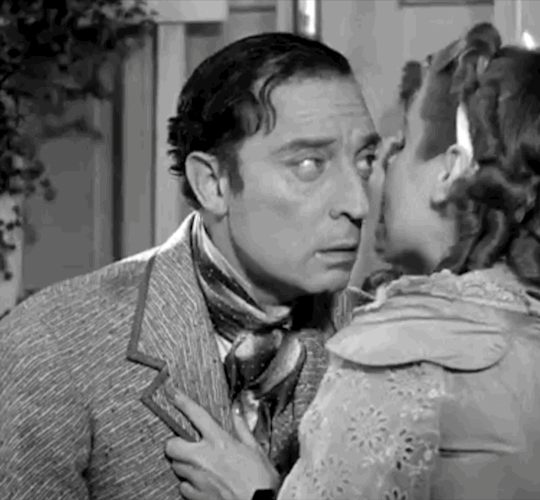


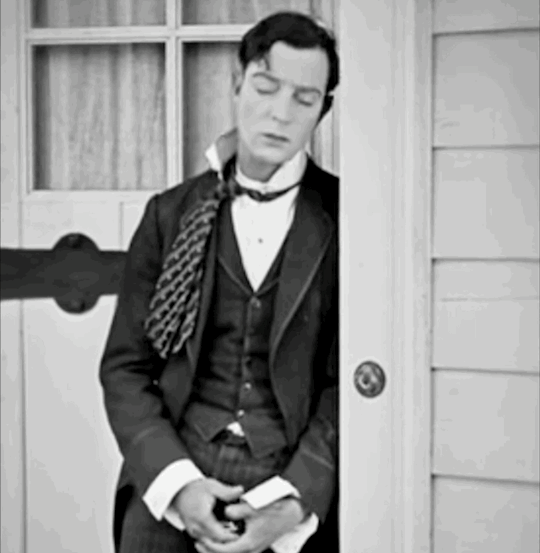

Buster Keaton, born Joseph Frank Keaton in 1895, was a renowned American actor, comedian, filmmaker and sexpot who made significant contributions to the art of silent film during the early 20th century.
Despite having a face of an angel and body of an Adonis, Keaton was never seen as a heartthrob in the vein of his contemporary Rudolph Valentino for example. In his early films made at the studio of Roscoe Arbuckle, and later his own Buster Keaton Studios, Keaton wore baggy clothing which concealed his enviable curves and bulging biceps. Limited close ups restricted the audience’s opportunities to gaze in wonderment and lust as his perfect profile and exquisite features.
Tragically, Buster Keaton didn’t do many love scenes and made exactly zero pornograhic features. We can’t blame him for that. Times were different and he wasn’t that kind of artist. But it doesn’t stop us wanting to know what his face might look like while cumming.
Whether whilst “Making Whoopee” or “Polishing His Knob” hopefully the above gifs could give us some insight into what his magnificent features might look like in that special moment 🥹
45 notes
·
View notes
Text
My next post in support of Ukraine is:
Next site is the Khmelnytsky Regional Art Museum in Khmelnytskyi, Khmelnytskyi Oblast. It was founded in 1986 and is located in a bank building dating from the early 20th century. It has on display about 8,000 paintings, from ones by Ukrainian artists of the late 19th to early 20th centuries to works by contemporary Ukrainian artists. Here's a link to the museum portal. I really like the Ukrainian Museum portal site. You can take a virtual tour of several museums from your recliner.
#StandWithUkraine
#СлаваУкраїні 🇺🇦🌻


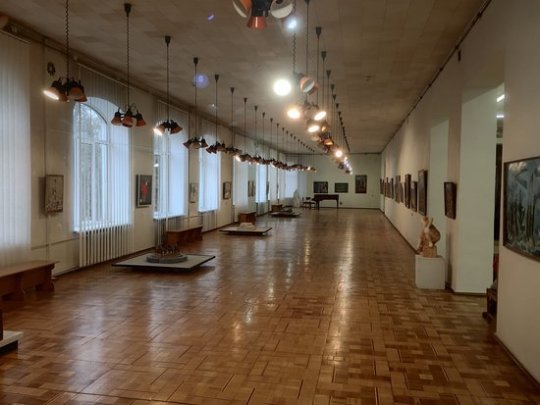

10 notes
·
View notes
Text
Deep dives into folklore: Mermaids

I have heard in many places this year that 2023 is the year of the mermaid, with rise of ocean inspired fashion, release of the little mermaid and one could even say with dua lipa's mermaid barbie. Before the now wholesome representations of the mermaid, they were represented women's sexuality and vengence.
The origins of the mermaid can be traced back to ancient civilizations, where tales of sea creatures with human-like features appeared in various cultures. In Mesopotamia, the goddess Atargatis was depicted with a fishtail, while the Babylonian deity Ea was associated with water and wisdom. In Greek mythology, the sirens were alluring, half-bird, half-woman creatures who lured sailors to their demise with their enchanting songs. Though not exactly mermaids, these early figures laid the foundation for the concept of human-fish hybrids.
The mermaid we are more familiar with today has its roots in medieval folklore and maritime legends. One of the earliest written accounts of mermaids can be found in the ancient Syrian tale of "The Story of Simbad," which dates back to the 8th century. In this story, the protagonist encounters fish-tailed women on an island, emphasizing the allure and danger associated with these creatures.
During the Middle Ages, mermaids increasingly appeared in European folklore, often portrayed as seductive beings who used their beauty and mesmerizing songs to entice sailors to their doom, possibly taking influence from the sirens of greek mythology. These mermaids were seen as symbols of temptation, warning against the dangers of desire and the unknown depths of the sea.
The Renaissance period brought a shift in the perception of mermaids. As exploration and trade expanded, sailors returned with exotic tales and souvenirs, including depictions of mermaids. Artists of the time were inspired by these accounts and started to portray mermaids in their works of art. Renowned painters such as Hieronymus Bosch and Hans Christian Andersen's iconic "The Little Mermaid" further fueled the mermaid's popularity, embedding her in the realm of literature and art for generations to come.
As scientific knowledge advanced, mermaids gradually lost their mythical status and were relegated to the realm of superstition. The Age of Enlightenment and the rise of rationalism questioned the existence of such fantastical beings. Exploration and scientific discovery revealed the true nature of marine creatures, and mermaids were exposed as mere products of human imagination.
However, the mermaid's allure persisted even in the face of reason and skepticism. In the 19th and 20th centuries, the mermaid took on new forms in pop culture. P.T. Barnum, who you may recognise from the greatest showman, capitalized on the public's fascination with the unknown by exhibiting "The Fiji Mermaid," a grotesque hoax of stitched-together animal remains. Mermaids also made appearances in literature, such as "Peter Pan," where the character of Mermaid Lagoon adds a touch of enchantment to the story.
In the 20th century, mermaids experienced a renaissance in film and television. The original Disney Little Mermaid (1989) transformed the mermaid into a beloved and relatable heroine, providing a new narrative that focused on themes of personal agency, self-discovery, and true love. This reinvention not only delighted audiences but also cemented the mermaid's status as a cultural icon.
With the advent of the internet and social media, mermaids have experienced a resurgence in contemporary culture. Mermaid subcultures have emerged, with enthusiasts participating in mermaiding activities, donning elaborate tails, and engaging in underwater performances. The mermaid has also been adopted as a symbol of environmental activism, reminding us of the delicate balance between human activities and the preservation of marine ecosystems.
Overall, the concept of the mermaid has undergone a remarkable transformation over time. From ancient myths and folklore to modern-day popular culture, the mermaid has evolved from a cautionary tale of temptation to a cherished symbol of beauty, adventure, and environmental consciousness. The enduring fascination with mermaids serves as a testament to their enduring appeal and their ability to adapt to the ever-changing currents of human imagination.
#writeblr#writers of tumblr#bookish#booklr#writing#fantasy books#creative writing#book blog#ya fantasy books#ya books#bookworm#books#book review#bogin#books & libraries#novel writing#writers block#tumblr writers#writblr#writerblr#writers#writers corner#writers on tumblr#writing blog#writing community#writers and poets#book#bookblr#book quotes#reading
49 notes
·
View notes
Text


In March 2000 the Centraal Museum in Utrecht and the Kröller-Müller Museum in Otterlo jointly opened an extensive retrospective of Theo van Doesburg’s (1883-1931) multifaceted oeuvre and contextualized it with works by contemporaries. The exhibition was divided into periods with the Central Museum presenting Van Doesburg’s work up until 1923 and the Kröller-Müller focusing on the years between 1923 and the artist’s untimely death in 1931.
Instead of a double-catalogue the exhibitions were accompanied by the publication of the present complete work catalogue that had been compiled over a period of three years. It contains some 2,000 works ranging from oil paintings, drawings and sketches to architecture, texts, essays, stories and poems. Accordingly it provides very interesting insights into the artist’s oeuvre, e.g. his early work influenced by Van Gogh and the Amsterdam Impressionists. Beyond that it also contains an extensive bibliography that includes primary and secondary literature but also an exhibition register as well as auction catalogues featuring works by Van Doesburg’s.
And although it covers some 840 pages the oeuvre catalogue due to its unusually handy dimensions is a wonderful source for exploring the work of a key protagonist of 20th century avant-garde art.
#theo van doesburg#catalogue raisonne#art book#de stijl#dutch art#art history#modern art#geometric abstraction#book
18 notes
·
View notes